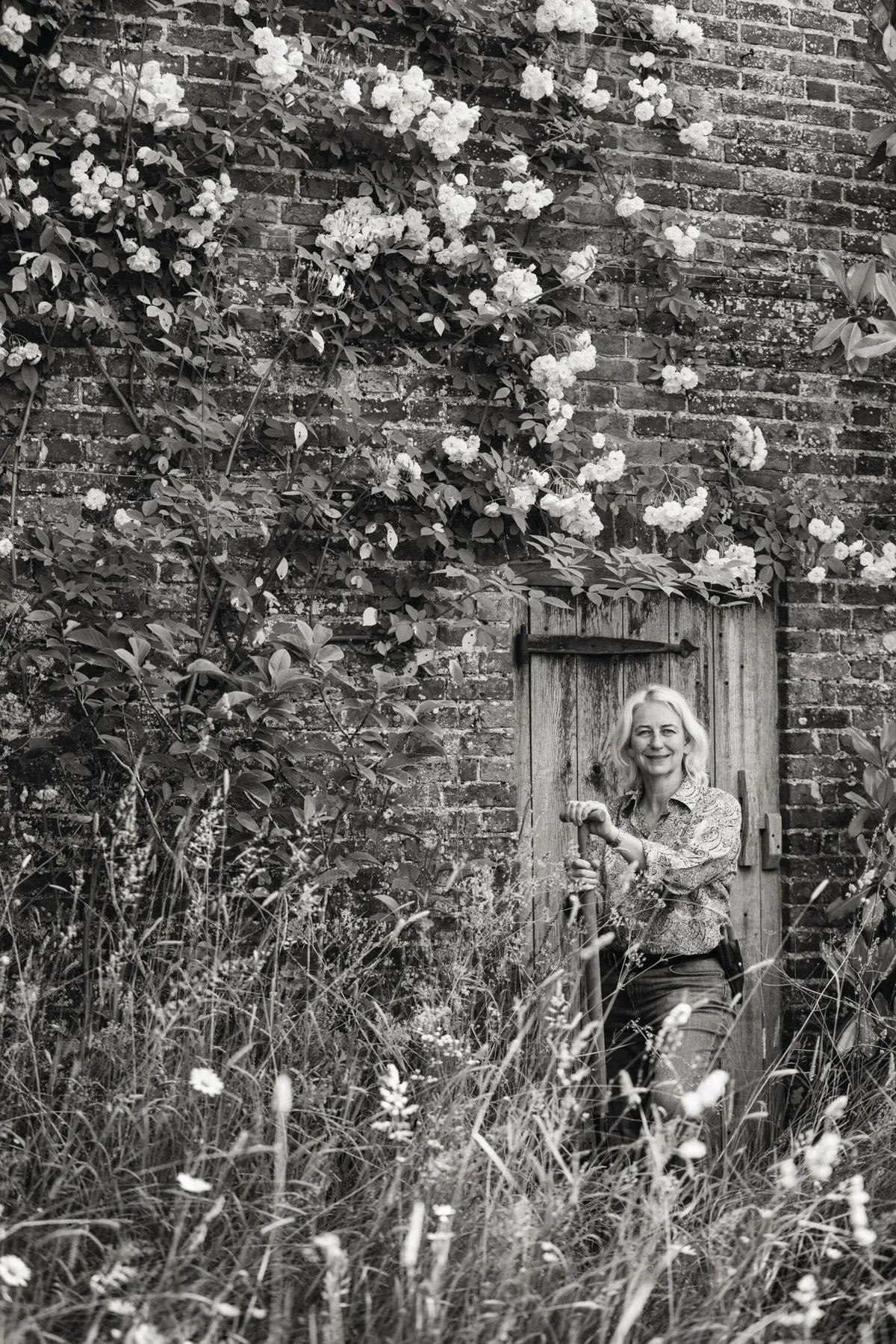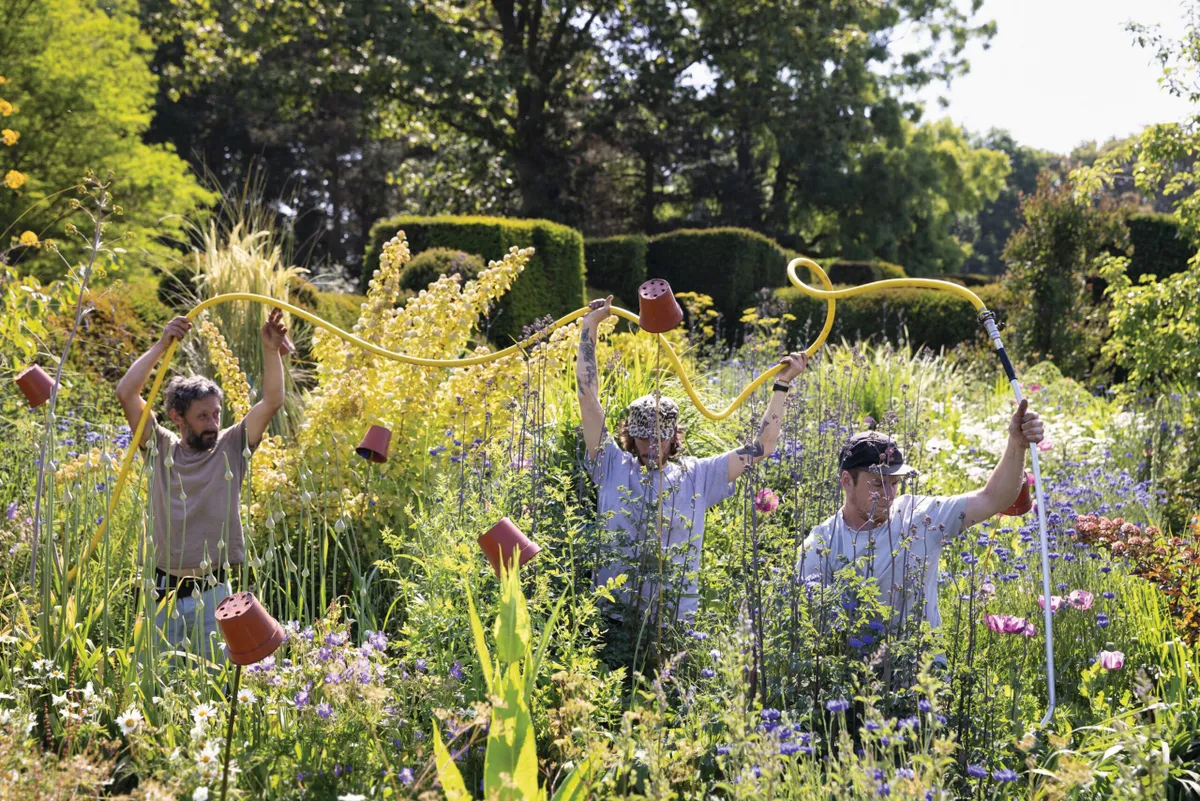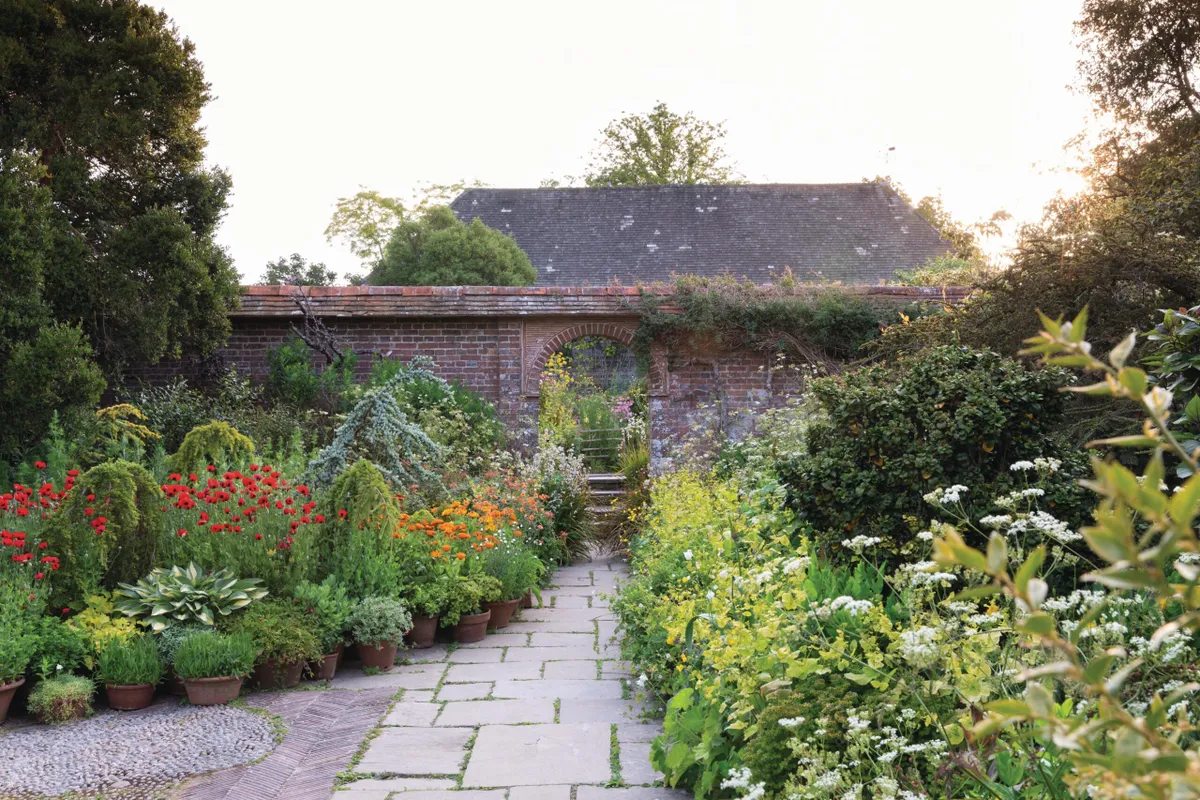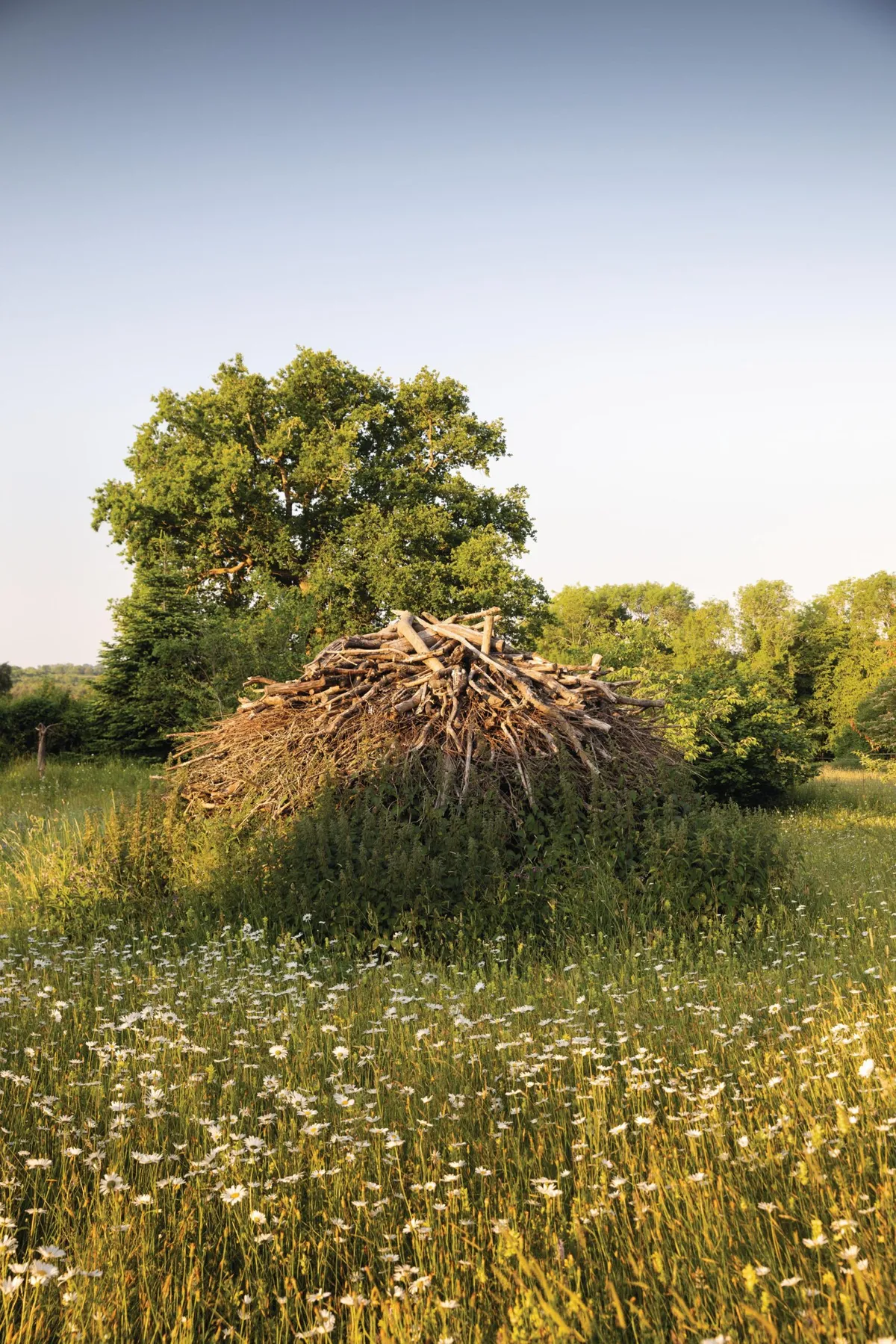At the beginning of last year, I started working as a volunteer gardener at Great Dixter, and it’s no exaggeration to say that the experience has changed my life. I have loved this garden for as long as I can remember, drawn by its unique combination of high horticulture and beautiful Arts and Crafts structure. I’ve got a shelf full of books by Christopher Lloyd and I was part way through my second year of practical gardening courses at Dixter when the pandemic brought life to a screeching halt. Stuck at home, I wrote to ask if I could volunteer in the gardens and, a mere year later, I was offered a place.
Watch Great Dixter on Monty Don's British Gardens
I felt like I had won the lottery – a lottery in which the prize involved setting my alarm for 5.30am on a freezing February morning. Stumbling around in the dark, I pulled on layers of thermals, loaded my shiny new steel-toe-capped boots and a Thermos of hot soup into the back of the car, and set out on the drive from my home in southeast London to East Sussex. Twelve hours later, I staggered back through the front door so tired that I could hardly crawl upstairs to run a hot bath, but I knew that I was going to keep on going back every week for as long as the team would have me. That day, I stopped being a visitor, and became one small part of an amazing community.
I find it hard not to gush when I write about the people I have met there, because they have all been exceptional individuals in their different ways. Some come for a week or a month. The fortunate and talented few spend a year here on a residential scholarship, guided by the quietly brilliant core team of head gardener Fergus Garrett, assistant head gardener Coralie Thomas, plus Ben Jones, Michael Wachter and Sarah Hudson. This horticultural mecca attracts people of all ages, and at different stages in their gardening lives, who come from all over the world to try to learn what makes Dixter so special.
Fergus has embodied its spirit as much as he has shaped its aesthetic
The short answer to that question is: Fergus. He has devoted himself body and soul to the garden for over 30 years and, since Christopher Lloyd died in 2006, has embodied its spirit as much as he has shaped its aesthetic. Naturally, he is a superb gardener and plantsman, but he is also a visionary free thinker who was well ahead of the curve in recognising the value of nurturing biodiversity and respecting ecology in an ornamental setting. Now he devotes his considerable energy to sharing all that knowledge, with both the students who will become the next generation of head gardeners, and people like me.
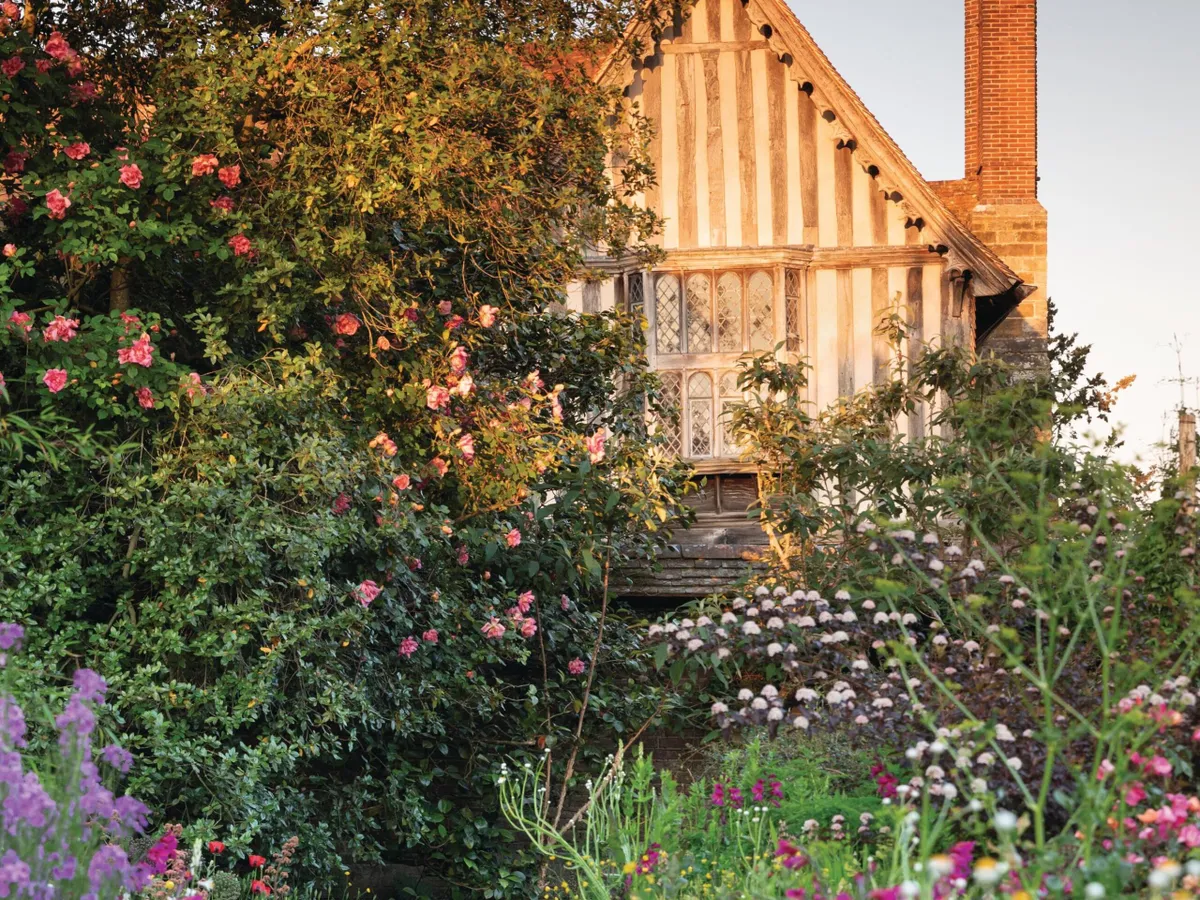
So on my first morning, though I was expecting to be given a low-risk task in an out-of-the-way corner, I was actually set to work on the famous Long Border. The ethos here is to learn through doing, and it is quite an education because they do a lot of things differently here. My very first lesson on that rainy day was to respect the ground at my feet. Dixter soil has been carefully nurtured for 100 years, and it has an amazing structure rich in beneficial mycorrhizae and other organisms that help plants grow to twice their normal size. We step on it as little as possible in general and not at all when it is wet, instead working off old scaffolding boards laid out across the beds to form protective paths. Year round, the soil is kept covered as much as possible, primarily with plants, but in winter it also gets a protective and enriching coat of compost. This is more of a tickled-in top dressing than a traditional mulch, which would stop seedlings germinating, because the great variety of self sowers are an important part of the picture.
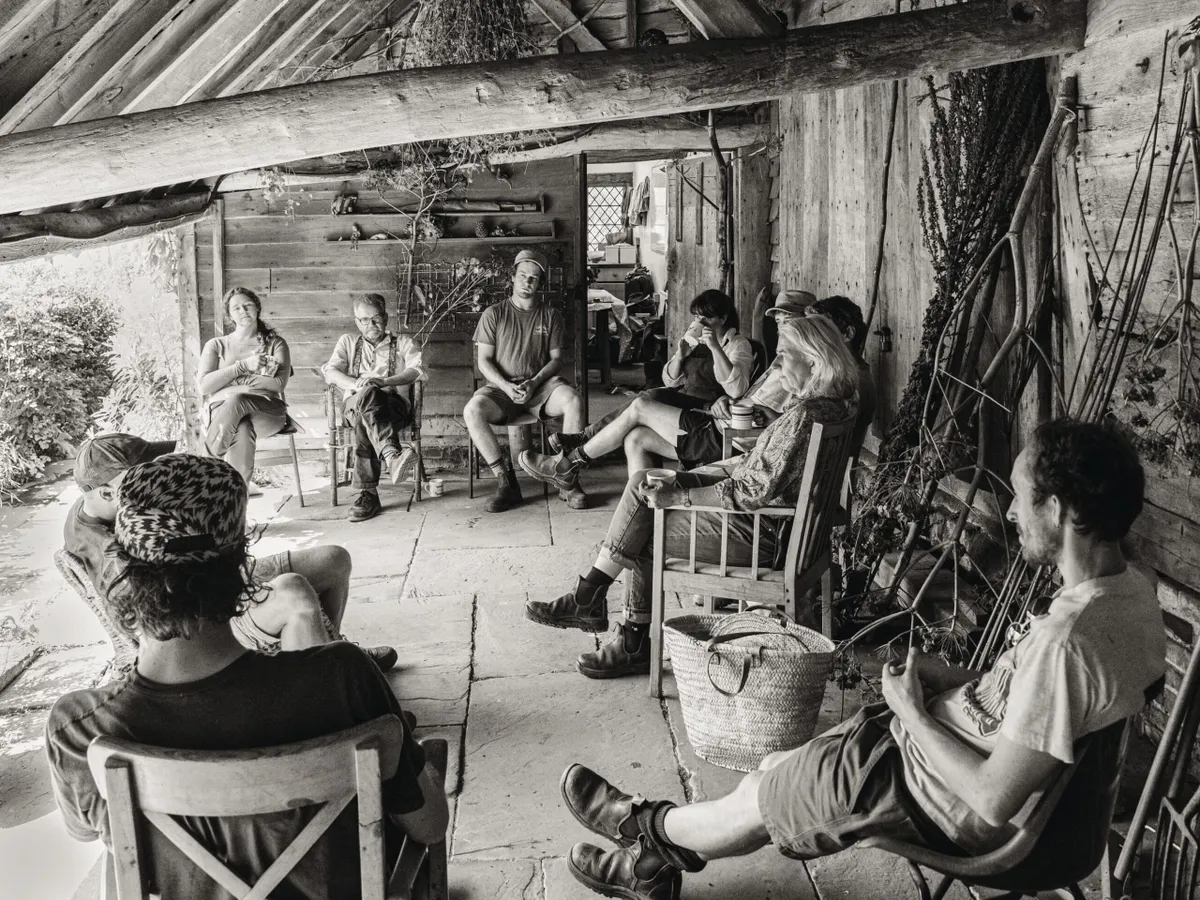
Visitors often comment on how nice the garden looks ‘considering it has just been let go’, but this apparently effortless informality is the result of a lot of hard work. We regularly get down on our hands and knees to assess all the emergents, thinning or transplanting them in a painstaking process that should be imperceptible if it is done right. The aim is to create a hyper-natural effect. We take the same approach with the seed-raised seasonal bedding that is planted into pockets between the permanent structure of trees, shrubs and perennials. These displays are changed two or three times a year, underplanted with bulbs for maximum impact, and everything is set out in a naturalistically random ‘high-low density pattern’ that is easy to understand, but surprisingly difficult to achieve. It certainly has nothing to do with the rules on planting distances set out in the manuals.

As I soon learned, Dixter gardeners don’t really follow rules. Instead they experiment, observe and learn from the experience, which explains their novel approach to cultivating seed. While every textbook will tell you to wait until you see the first true leaves, here seedlings are pricked out at cotyledon-leaf stage, then transplanted deep into their modules, so the leaves sit only just above the surface of the soil. I now do this at home and it is extremely effective, even with tricky things like poppies that usually resent upheaval.
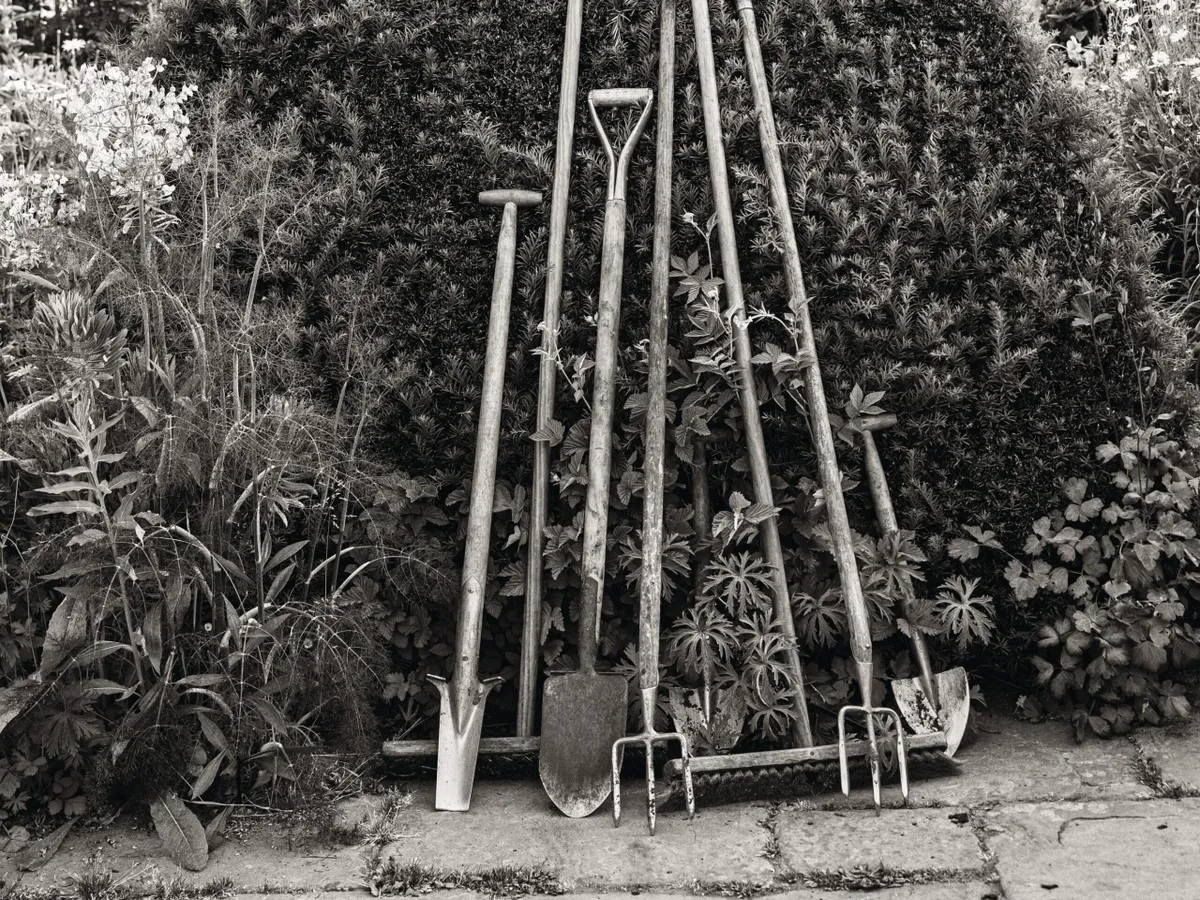
The successional nature of the planting has been another ongoing education. When I arrived in February, everywhere I looked there were carpets of snowdrops, cyclamen and the beautiful marbled foliage of Arum italicum ‘Marmoratum’. Week after week, it just got brighter and better.
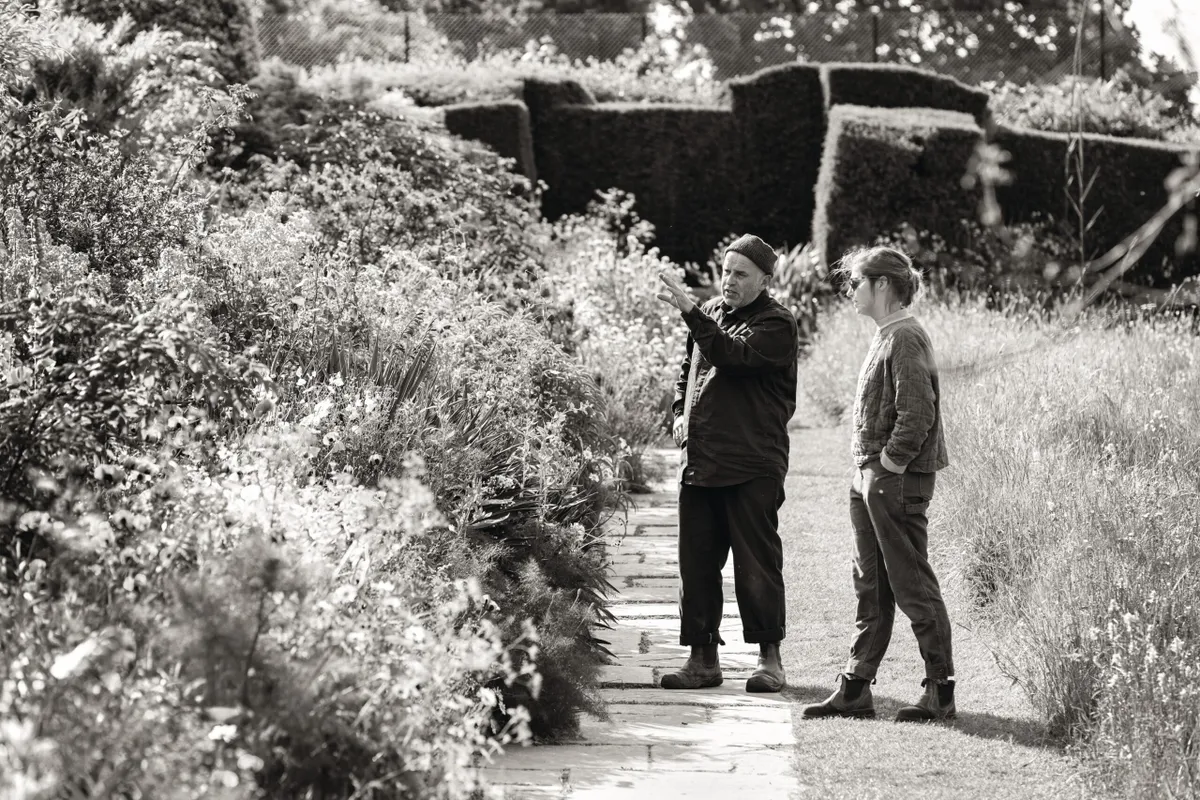
Large parts of the garden are richly layered with a combination of plants that coexist happily, complement each other visually and peak successionally. It’s an approach I’m now exploring in my own garden, building my layers, refining my plant selections, and tucking in some bedding for seasonal sparkle. It helps once you discover that phlox turn up their toes if they feel even slightly squashed, while
a persicaria can push straight through a slimy mat of Spanish bluebell foliage. I still get things wrong, but I’ve also learned to relax and enjoy the process.
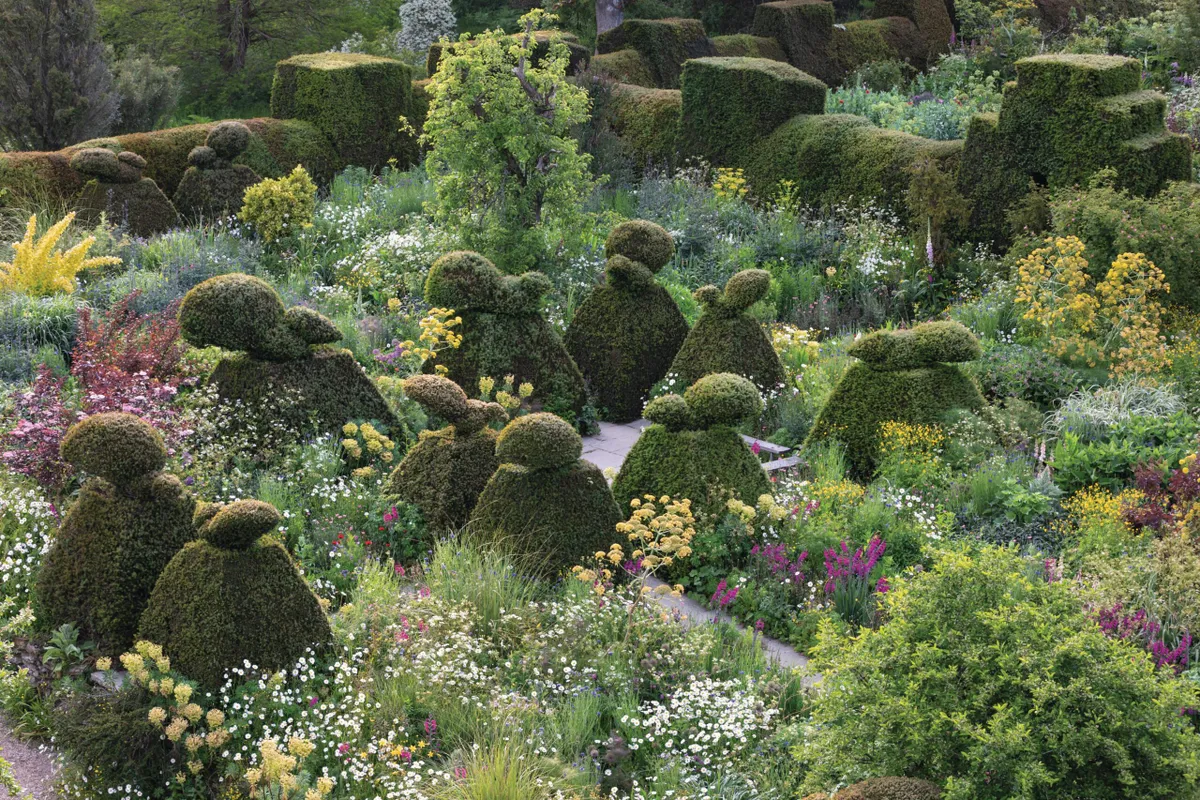
herself dreaming of these topiary pieces in the Peacock Garden, where they sit in an ever-changing sea of colour. © Richard Bloom
At Dixter, we paint pictures with plants and then take time to assess the outcome. Successes are celebrated but rarely repeated, because where’s the fun in that, and why miss an opportunity to try something new and different? Instead of soul-crushing ‘To Do’ lists, Fergus produces brain-boggling mind maps, which link ideas, aspirations and jobs for the week in an exuberant swirl of marker pen that perfectly captures the air of excitement.
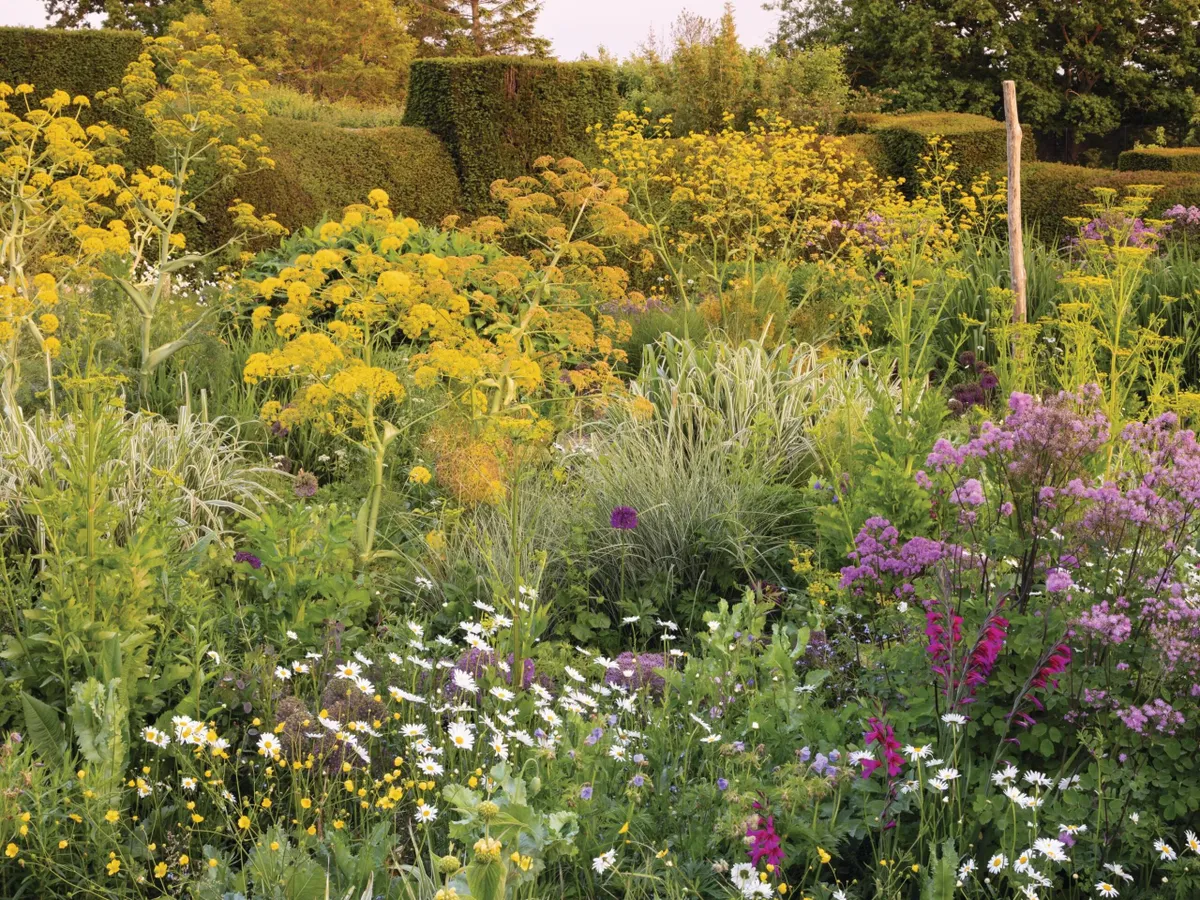
In a country full of beautiful gardens, I think it is the culture of intelligent curiosity and questing creativity that sets Dixter apart. In my time as a volunteer I have learned to work more neatly, to pace myself with regular tea breaks, and to keep my secateurs sharp at all times, but the real lesson has been to garden with my heart as well as my mind. I came to Dixter to be a better gardener; every week I leave it a happier person.
Other things I learned at Great Dixter
• Good-quality tools are a joy to use, and bad ones are a waste of time, money and temper. I’m a long-term fan of Felco secateurs but new discoveries include the Niwaki hori hori tool, Sneeboer planting spade (halfway in length between a trowel and border spade) and the Haws Warley Fall watering can.
• Sow hardy annuals in the preceding autumn if you’ve space for a cold frame. It will get your season off to a flying start the following year and save you a chore in springtime. Then sow some more in the spring, to extend the display.
• Grow plants hard and they’ll be all the better for it. At Dixter, most plants are set out in the cold frames and kept well ventilated. Even when temperatures drop, they’re just protected by a double layer of glass and an overnight blanket of burlap.
• Bulbs look great planted in single variety blocks with a compatible companion – maybe forget-me-nots, foxgloves or Smyrnium perfoliatum.
• In general, more is more. Forget the packet instructions when deciding how closely to plant annuals or bulbs. Last year, one particularly impressive pot of narcissi contained more than 50 bulbs.
• Weeds are in the eye of the beholder. Bindweed is a problem in some areas, but buttercups, bird’s foot trefoil, oxalis and dandelions are generally welcome. In the past few years, cow parsley has been positively embraced.
Find out about volunteering opportunities at more of the UK’s top gardens
Address Great Dixter, Northiam, Rye, East Sussex TN31 6PH. Tel 01797 252878. Web greatdixter.co.uk
Open March – October, Tuesday – Sunday, 11am- 5pm.

